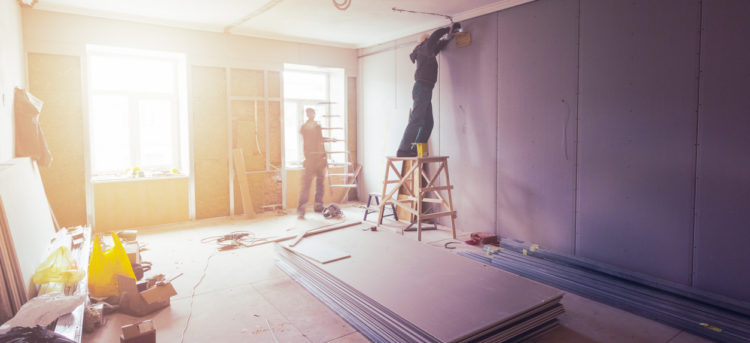Advertiser & Editorial Disclosure
For real estate investors who make money by flipping homes, ARV is a critical metric for determining whether a property can be profitable. Short for after repair value, ARV tells you how much the home is worth after you’ve made the necessary repairs and renovations.
If you’re a fix-and-flip investor, it’s crucial not only to know how to calculate ARV but also to understand how to use the figure to maximize your profitability.
What is ARV in real estate?
Fix-and-flip investors make money by purchasing distressed properties, making key repairs and renovations, then selling them for a profit, all within a year’s time.
As the term suggests, the after repair value of a property is not the purchase price but its estimated value once you’ve made the necessary improvements to sell. More specifically, the ARV includes both the purchase price of the property and the value of the improvements you’ve made.
You can use the ARV of a property to estimate its future sales price. Real estate investors calculate the ARV of a property to determine how much they should bid on the home.
How to calculate ARV
On a basic level, the ARV of a property is its purchase price plus the value of the renovations you’d need to make to make it sale-ready. To calculate the ARV of a specific property, here are the steps to take.
1. Determine the value of the property
The seller will likely already have a sales price listed for the property. But just like any homebuyer, you’ll want to hire an appraiser to give you an estimate as a disinterested third party.
The appraiser will consider several factors to determine the property’s market value, including:
- Location
- Structural features
- Age and design
- Square footage
- Number of bedrooms and bathrooms
- Heat and air systems
- Storage and garage space
- State of the property, including renovations
- Curb appeal
- Comparable properties in the area
Compare the estimate the appraiser provides with the asking price to determine the likely sales price.
Estimate the value of renovations
Remember, the ARV of a property is its sales price plus the value of the renovations, not the cost. So if you buy a distressed home for $150,000 and put $25,000 worth of repairs into it, then sell it for $225,000, the ARV is $225,000, not $175,000.
To estimate the value of the renovations you’ll make, take a look at comparable properties in the area that you expect the home to look like when you’ve finished the work. Focus on properties that are in the same neighborhood or close by, are similar in size and features, and have sold in the last few months.
If you hired an appraiser to estimate the value of the home, you can ask them to share information about comparables with you. Otherwise, you may need to do some legwork of your own to gather the information.
Calculate your profit
While renovation costs aren’t included in the ARV calculation, they are important for determining your profit. When you’re more experienced as a fix-and-flip investor, you may be able to estimate these costs on your own. Until you get to that point, though, get some estimates from multiple contractors.
Also, it’s important to note that the renovation costs aren’t the only expenses associated with fixing and flipping a property. You’ll also want to consider closing costs on the loan you’ll use to buy the property, the interest, insurance and taxes associated with owning the home, and the cost of marketing and selling the property once it’s ready to be flipped.
Once you know how much the renovations will cost, subtract that figure from the ARV and you’ll get your profit.
What is the 70% rule in house flipping?
The 70% rule is a rule of thumb real estate investors use to determine how much to bid on a property. The goal is to submit a bid price that’s 70% of the ARV minus the estimated costs.
For example, if the ARV of the property is $225,000 and the estimated repair and other costs are $30,000, multiply the ARV by 70%, and you’ll get $157,500. Then minus the $30,000 in costs to get a maximum bid price of $127,500.
If everything goes as planned, the 70% ARV rule ensures that you get a 30% return on your investment. But because things may not go as planned, it provides a buffer to help reduce the risk that you’ll lose money on the property.
LTV (loan-to-value) and ARV
If you’re planning to finance your fix-and-flip investment, both the property’s ARV and its LTV will come into play. That’s because hard money and bridge financing lenders typically limit how much you can borrow based on both of these metrics.
The loan-to-value ratio on a property is the amount of the short-term loan divided by the value of the property as-is or the purchase price. It’s normal for the LTV limit to be greater than the ARV limit. For example, a lender may choose to finance no more than 70% of the home’s ARV but go as high as 85% with the LTV.
In this case, you’d need to put some money down to secure financing for the project.
How to fund 100% of your flip
There are plenty of financing options for fix-and-flip projects, but if you don’t have enough cash reserves to make a down payment, your options may be limited. Fortunately, there are some lenders that are willing to finance 100% of the project costs, which includes the purchase price of the home and the repair costs.
One example is Do Hard Money, which operates in 31 states and the District of Columbia. The lender offers 100% financing to members of its Find-Flip-Fund System but caps the total loan amount at $250,000. Repayment terms with the lender range from five to 12 months and interest rates start at 7.99%. You can also expect an origination fee of 2 to 6.5 points.
As you compare Do Hard Money and other top private money lenders, also consider owner financing as a solution. Between all of your options, think about how much you can borrow, the costs associated with the loan and how much time you’ll have to repay what you owe. If a lender’s willing to finance 100% of your flip, but the repayment term is shorter than the time it’ll take you to flip the home, it could be more trouble than it’s worth.
As you compare lenders, take your time to make sure you find the right fit for your needs and profitability. You can also get your business ready to apply for a loan with Nav’s Business Boost and Business Loan Builder plans.
This article was originally written on November 8, 2019.



Have at it! We'd love to hear from you and encourage a lively discussion among our users. Please help us keep our site clean and protect yourself. Refrain from posting overtly promotional content, and avoid disclosing personal information such as bank account or phone numbers.
Reviews Disclosure: The responses below are not provided or commissioned by the credit card, financing and service companies that appear on this site. Responses have not been reviewed, approved or otherwise endorsed by the credit card, financing and service companies and it is not their responsibility to ensure all posts and/or questions are answered.